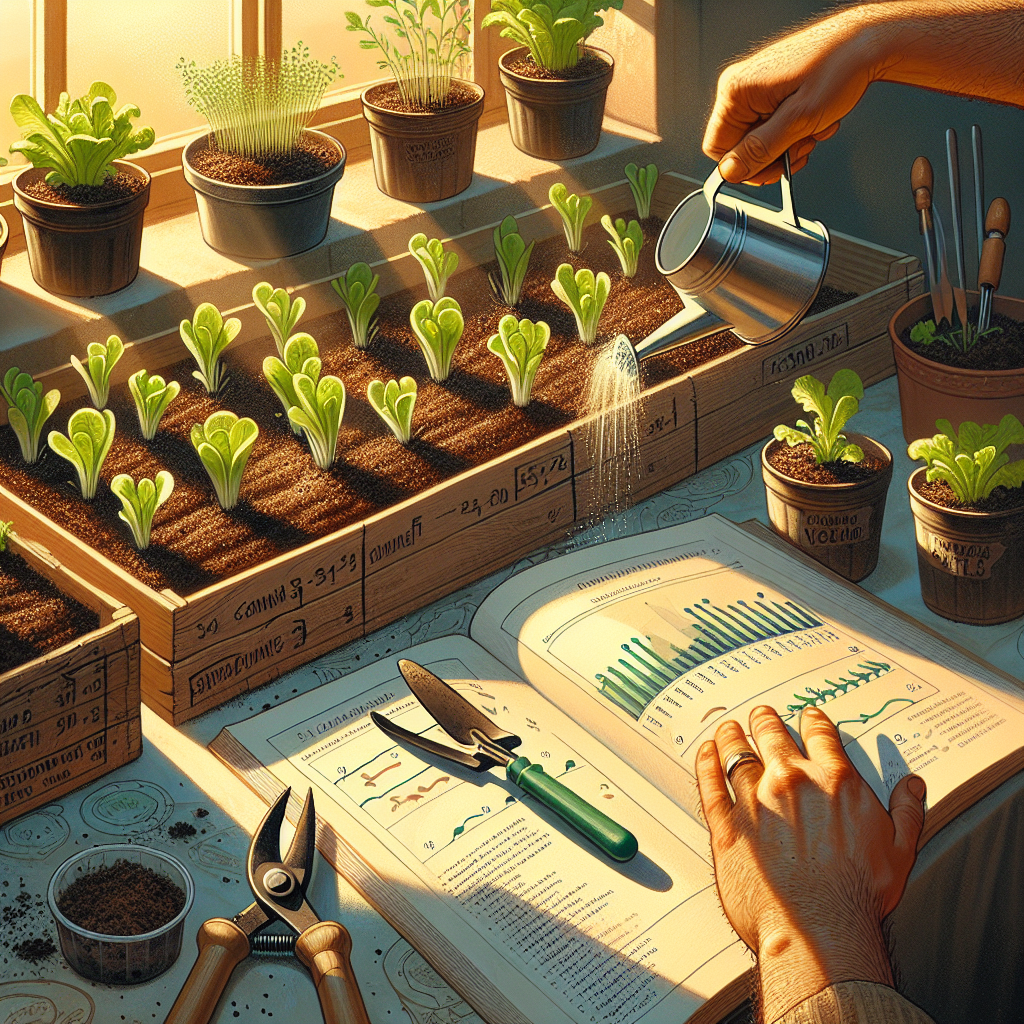
How to grow lettuce at home
How to Grow Lettuce at Home: A Comprehensive Guide
Growing your own lettuce at home can be a rewarding experience, both for your wallet and your health. Freshly harvested lettuce is not just tastier but also retains more nutrients compared to store-bought options. In this guide, we’ll explore various methods for growing lettuce successfully and answer common questions to set you up for success.
The Benefits of Growing Lettuce at Home
Before we dive into the details of how to grow lettuce at home, let's consider some of the benefits:
- Freshness: Enjoy crisp, fresh lettuce straight from your garden.
- Cost-Effective: Save money by growing your own instead of purchasing from the store.
- Variety: Experiment with different lettuce types that may not be available locally.
- Health Benefits: Know exactly what goes into your food, avoiding pesticides and chemicals.
Choosing the Right Lettuce Varieties
When it comes to selecting types of lettuce, there are several options. Here are the main categories:
- Iceberg: Crisp and crunchy, this variety is popular for salads and sandwiches.
- Romaine: Known for its upright leaves, it provides a nice texture for salads.
- Butterhead: Soft, tender leaves that are sweet and perfect for wraps and salads.
- Leaf Lettuce: Comes in a variety of colors, great for adding visual appeal to dishes.
Consider which type suits your taste and culinary needs before planting.
Preparing Your Space for Growing Lettuce
Lettuce doesn't require much space, making it great for home gardeners. However, some preparation is essential:
- Choose a location with ample sunlight. Lettuce prefers 6-8 hours of light per day.
- Ensure the soil is well-draining and rich in organic matter. You can buy potting mix or create your own soil mix at home.
- Consider using containers if you're short on garden space. Lettuce can thrive in pots, raised beds, or standard garden plots.
Soil Preparation and Fertilization
The right soil conditions are critical for growing healthy lettuce:
- Soil Type: Use loamy or sandy soil that drains well.
- pH Level: Lettuce prefers a soil pH between 6.0 and 6.8.
- Organic Matter: Incorporate compost or well-rotted manure to enrich the soil.
Additionally, applying a balanced fertilizer can give your lettuce an extra boost throughout its growing cycle.
How to Start Your Lettuce Seeds
You can start lettuce seeds indoors or directly in your garden. Here’s how:
Starting Indoors
- Fill seed trays or small pots with your prepared soil mixture.
- Sow seeds approximately 1/4 inch deep and cover lightly with soil.
- Water gently, keeping the soil moist but not soggy.
- Place trays in a sunny window or under grow lights until seedlings emerge.
Direct Seeding Outdoors
- When the danger of frost has passed, prepare your garden bed.
- Use a rake to level the soil and create a fine seedbed.
- Scatter seeds evenly and lightly rake them into the soil.
- Water the area gently to settle the seeds.
Caring for Your Lettuce Plants
Once your lettuce seeds have germinated, proper care is essential for healthy growth:
- Watering: Keep the soil consistently moist, especially in dry weather.
- Thinning: Once seedlings have two sets of true leaves, thin them out to avoid overcrowding.
- Pest Management: Watch for aphids and slugs. Use organic pest control methods if needed.
- Mulching: Apply a layer of mulch around the plants to retain moisture and regulate soil temperature.
Harvesting Your Lettuce
The time to harvest your lettuce depends on the variety:
- Leaf Lettuce: Harvest leaves when they are about 4-6 inches tall, cutting the outer leaves and allowing the inner leaves to continue growing.
- Romaine and Butterhead: Wait until heads form and reach around 6-8 inches in height before harvesting.
- Iceberg: Harvest when the head feels firm to the touch, usually around 70-75 days after planting.
Using scissors or a sharp knife, cut the lettuce at the base, ensuring you don’t uproot the entire plant, as some varieties may regrow.
Storing Your Harvest
After harvesting, it's essential to store your lettuce properly to maximize freshness:
- Remove any damaged leaves and wash the remaining lettuce thoroughly.
- Dry the leaves using a salad spinner or by patting them with a clean kitchen towel.
- Store your lettuce in a plastic bag or container in the refrigerator, where it can last for several days.
Common Challenges in Growing Lettuce
Even the most experienced gardeners face challenges. Here are some common issues and how to tackle them:
| Problem | Solution |
|---|---|
| Bolting | Provide consistent watering and shade during extreme heat. |
| Pest Infestations | Introduce beneficial insects like ladybugs or use insecticidal soap. |
| Diseases | Practice crop rotation and ensure good air circulation to minimize fungal issues. |
Conclusion
Growing your own lettuce at home not only provides a constant supply of fresh greens but also cultivates a fulfilling hobby. Whether you choose to plant in a garden bed or containers on your balcony, following these steps will ensure healthy plants and delicious harvests. Remember to monitor growing conditions and adapt your care as needed. Happy gardening!
By Guest, Published on September 30th, 2024